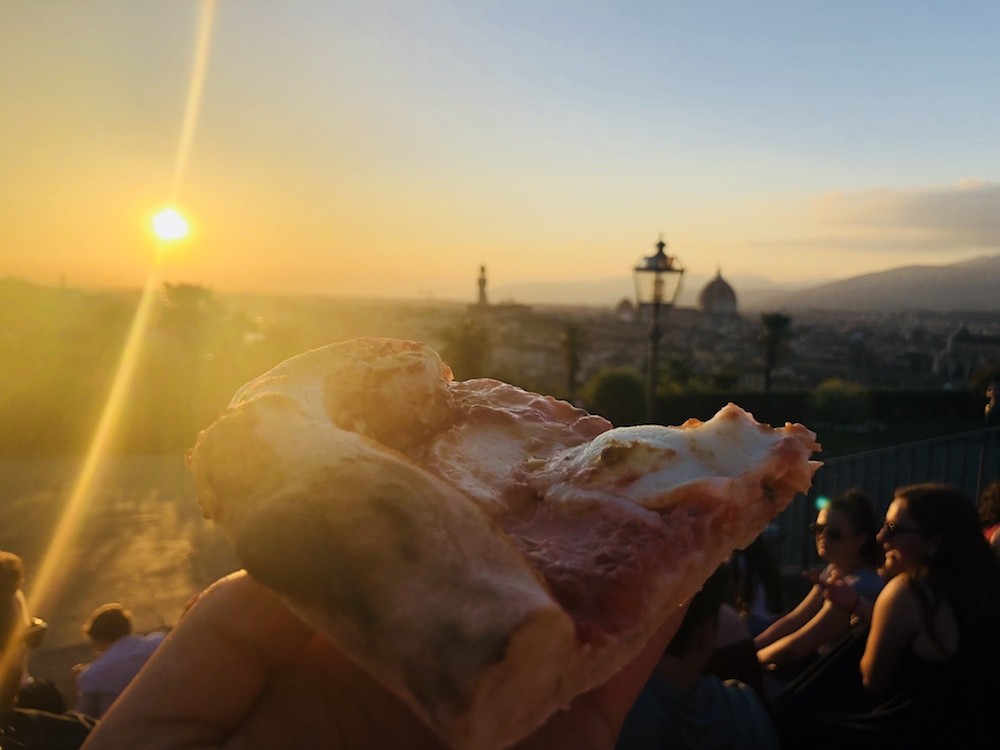The plane touched down on a narrow strip between mountains that I never realized were a part of the Italian landscape. I remember my feet feeling the ground, but for several weeks I continued to float, feeling as high as the jet I had just disembarked from. I drifted along the breeze through the alleyways of Florence, as the scent of fresh leather and river water hung in the air. I was plucked out of my own American reality, and plopped down in the middle of a wobbly, cobblestone dream. Instead of my senses being muddled by a state of sub-consciousness, for the first time in my life, I was truly awake… and alive.
The vibe of Florence is hard to understand until it is experienced, and even after spending a month at my “dome sweet dome” it is still hard to encapsulate. There is a certain verve that comes with the city’s life: the way that Italians confidently navigate through the hustle and bustle of vespas and bikers, the way that dozens of people enter and leave the city daily on Trenitalia rail, the way that the pizza boy smirked at me when I politely asked “Can I buy a pizza?” and with a wink he playfully answered “no.” The sassy, hurried lifestyle is contrasted sharply by an immense sense of serenity. Despite there being a Catholic church every few blocks, the national religion seems to be relaxation. Italians enjoy taking it slowly, and savoring every last drop: whether that be wine, gelato, or life.

On one of the last nights, my friends and I sat in our ‘piazza’ (Piazza Santo Spirito), enjoying a bottle of house wine and the recommended dish at a local restaurant. It was 9:00 pm when we sat down at our table. This hour of the night, which I would consider to be “late” back home, was just the start of our evening. We ate dinner slowly, we laughed, and talked. Kids ran around us – one toddler fell and scraped her knee. A dog off leash came by and hung out by our feet, looking for the scraps we never dropped. People ate pizza on the church steps, in clumps of friends, and no one was on their phones.
We heard music come from the center by the fountain. We heard people clapping in unison. In the middle of the piazza, people were dancing. We asked for the ‘conto’ (the bill), and went over to watch, and before we knew it, we were pulled into the dance, clapping and dancing along. And, as I was holding hands with a friend to my left and a stranger to my right, and as we spun in a circle, I thought: “Is this real?”
It is impossible to visit Firenze just once and experience all of it. Spending a full afternoon at the Uffizi Gallery doesn’t give you a perspective on art. If you walk into a building and look up, you’ll miss the mosaic tiling on the floor. If you look at the mosaic, you’ll miss the fresco paintings on the ceiling. But the fear of missing out on something doesn’t exist, because no matter what you are doing, every sense is engaged and on overdrive. Thankfully, instead of being hyper-stimulated, there is a sense of peace and calm that comes along with knowing that you are living each day to its fullest. And some days are longer than others because time is fluid. Some days the church bells rang at 8:27, some days they didn’t ring until 8:40. It didn’t really matter. It wasn’t about making sure each moment happened “on time” as long as you enjoyed each moment entirely.

Italy was a place where I wasn’t tired after a few hours of sleep, where I wasn’t full after eating pizza, focaccia, chocolate, and gelato for lunch; where six scoops of gelato and then a cannoli in one day was okay; and where I cried several times for different reasons: the sea water was too blue, the pesto was too tasty, the violin music outside of the Duomo in Siena was too chilling. Florence taught me many things: from the history of the Medici family, to validate my train ticket, how to properly taste wine, the art of the Renaissance, and to look both ways for bicycles before stepping out of an alley.
But, most importantly, my Italian classroom taught me how to live.
Abby Brodbeck, Carroll University
Faculty-led Summer Program – ISI Florence
Creative Writing (Prof. James Gannon)
